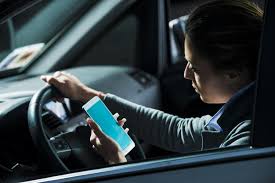
Ford and Toyota have announced that they have joined together to establish a nonprofit organization aimed at managing open-source software for smartphone application development for vehicles called SmartDeviceLink Consortium (SDL). According to the joint statement, other partners include Mazda Motor Corporation, PSA Group, Fuji Heavy Industries, and Suzuki. Supplier partners include Elektrobit, Luxoft, and Xevo. In addition, Harman and QNX have signed letters of intent to join the group. The goal of the consortium is to give consumers more choice in how they connect and control their smartphone applications on the road.
SmartDeviceLink (SDL) is a portable operating system interface (POSIX)–compliant open-source platform that allows any OEM and/or Tier-1 supplier to connect an infotainment system to third-party enabled applications. SDL can be deployed to Linux, QNX, or other popular infotainment operating systems and can communicate with iOS or Android mobile devices. A large benefit of SDL is that there is no need for a launcher app, unlike Apple CarPlay, Android Auto, and MirrorLink. If you have a compatible SDL app on your phone, that app will appear on your infotainment system.
Ford contributed its AppLink core software to the open-source community in January 2013. It calls the open-source variant of AppLink SmartDeviceLink. Ford continues to lead the advancement of the system by recruiting partners and developing the platform. Today, SDL is hosted by GENIVI Alliance and contributions are accepted via GitHub, where they are managed by Livio, a wholly owned Ford subsidiary that concentrates in software, which was acquired in 2013 to manage the SDL platform. Ford first launched SDL in the 2013 Ford Fiesta. Ford’s latest infotainment offering, SYNC 3, comes equipped with AppLink, powered by SDL.
Early in 2016, Toyota announced it would adopt SDL. Toyota is planning for SDL’s rollout on select Toyota and Lexus vehicles around 2018. SmartDeviceLink is the core that handles communication with compatible apps. The SDL API framework also handles restrictions on vehicle data that goes in and out. Automakers like Toyota would build an app manager, handle the HMI, and take care of the connection between the HMI and the SDL core.
An advantage of Ford’s AppLink/SDL system is that it can access some on-board diagnostics (OBD-II) information. At CES 2016, SDL demonstrated the ability for new apps to control noncritical controls in the car, including climate control and radio controls. SDL apps also access sensor and metadata; for instance, approved apps can access GPS information, wheel speed/yield, engine temperature, etc. All SDL apps need access to the vehicle ignition state, application/phone priorities, audio state changes, and data subscriptions. “SDL’s OBDII connection provides automakers a counterweight to the strength of Apple, Google, and MirrorLink, none of which can access detailed OBD-II information. IHS Markit sees SDL having big potential when it comes to apps implementing driver centric data, such as eco coach for green friendly driver, usage-based insurance (UBI) apps that can harness car sensor data for more accurate risk assessments, and potentially telematics applications for parking and more,” according to Bird.
“SmartDeviceLink will likely be a powerful OEM-centric alternative to Apple CarPlay and Android Auto. While Toyota, one of the world’s largest automakers, previously made a commitment to implement Apple CarPlay, and hasn’t made such a commitment to implementing Android Auto,” Bird added. Toyota’s strategy seems to be to implement Toyota Entune powered be SDL, prior to introducing third-party alternatives. Android Auto also has little to no coverage in China, which could give SDL an advantage.”
IHS Markit recently forecasted the domain apps integration platforms in its Apps Integration Strategies report, which was published in December, 2016. When viewing cumulative sales, today’s smartphone integrator landscape looks very different than where IHS Markit expects the industry to be in seven years. In 2016, SmartDeviceLink (SDL)/AppLink and MirrorLink are the dominant players among smartphone integration platforms. MirrorLink is an older apps platform that had some early successes with integration among Volkswagen Group vehicles, which continue to carry the middleware solution. SDL’s sales are mostly from AppLink (SDL has powered AppLink since 2013), which Ford has equipped on nearly 50% of its global vehicle fleet in 2016; but IHS Markit factored in Toyota’s adoption as well as some smaller Tier 1 suppliers, and we now expect SDL to become the third largest platform by 2023, surpassing MirrorLink, and smaller regional players like Baidu CarLife.
App integration platforms – cumulative sales forecast
Looking at the long term, however, there is no question Android Auto and Apple CarPlay will amass the greatest total number of vehicles equipped with their app integration solutions. Any OEM solution, including Apple CarPlay and Android Auto, has a miniscule install base compared with the more than 3 billion smartphones out there in the marketplace today. As more vehicles are equipped with these solutions, more app developers will see the underlining economic incentives to add these platform’s APIs to make their apps interoperability with the in-vehicle HMI. In turn, the network effect may finally bring users to these systems, spurring sustainable demand and a rich ecosystem of driver-centric apps. Apple CarPlay has a further advantage over Android Auto in the sense that its app launcher is integrated into the OS, whereas Android Auto requires the user to download the app independently on most handsets. This potentially skews the total amount of active users CarPlay will have, as well, compared with other solutions like Android Auto and MirrorLink, which require app launchers. SmartDeviceLink also benefits from not needing an app launcher, giving it a potentially larger amount of actual active users, and thus app developer support to implement the SDL API, over potentially even Android Auto.











More Stories
Is Your 70 Series Land Cruiser Underperforming? Here’s How to Unleash Its True Potential
What to Do After a Motorcycle Accident to Protect Yourself
Injured in a Motorcycle Crash? Talk to an Attorney Now